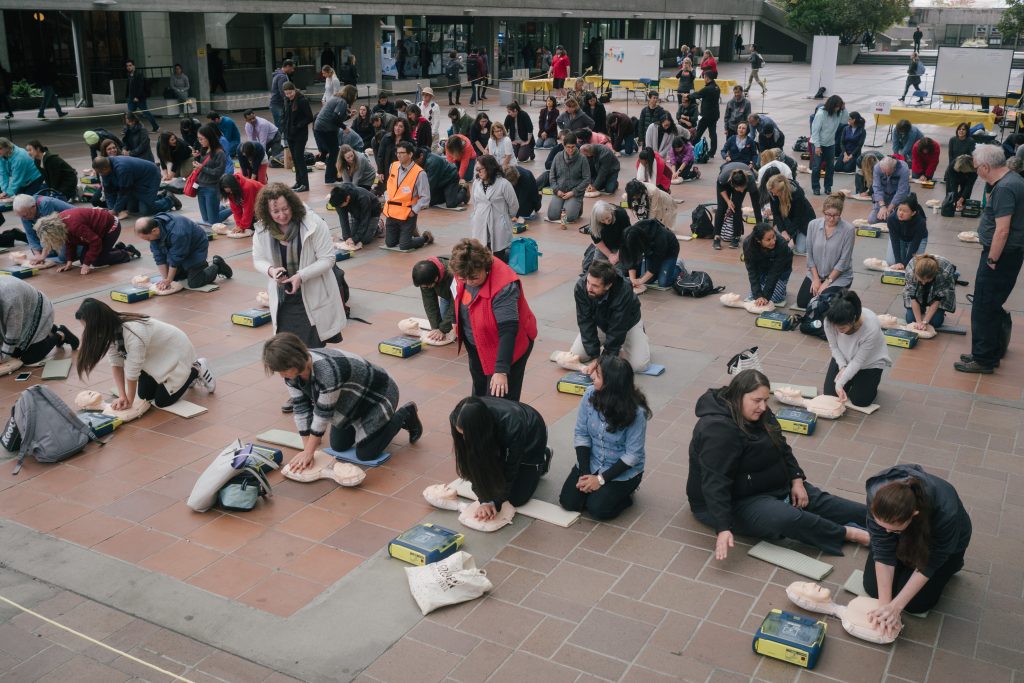By: Nathaniel Tok
SFU students and staff can feel at ease knowing that more than 400 members of the SFU community completed mass training in resuscitation and the use of emergency defibrillators at the Burnaby campus on September 19.
SFU Safety and Risk Services partnered up with Iridia Medical and the Heart and Stroke Foundation to demonstrate to the community the importance of having this life-saving knowledge. The event also provided an opportunity for the SFU community to learn how to use cardiopulmonary resuscitation (CPR) and automated external defibrillators (AEDs) if someone suffers from cardiac arrest.
“The goal of the training is to increase awareness, familiarity, and increase overall confidence to intervene when necessary to help save a life,” said Laura Vajanto, program manager of emergency planning at SFU Safety and Risk Services.
As part of the initiative, SFU also installed defibrillators across all of its campuses last spring, bringing the total to 49 units accessible in the case of an emergency. The defibrillators were installed prominently, complete with instruction plaques, to promote their usage within the first three critical minutes of a cardiac arrest.
“We’ve heard from staff in many departments who have taken notice of these and appreciate the information. We’ve also received requests for further training which we will be doing on an annual basis,” said Vajanto.

In BC, a cardiac emergency happens on average once every two hours. According to Vajanto, the first three minutes are crucial because every minute of delay in delivering the lifesaving shock decreases the survival chances of the victim by 7–10%.
The non-certificate CPR and AED training took place in half-hour sessions and consisted of a presentation conducted by instructors from the Heart and Stroke Foundation, who explained the basics of cardiac arrest. Participants were also able to practice these new skills on training mannequins.
According to Vajanto, the sessions had a high turnout and participants were impressed with the event. The university plans to offer similar training sessions at the Vancouver and Surrey campuses early next year.
The university website contains information about using CPR and AEDs and the school is committed to providing recurring training opportunities because “if you don’t practice the skills you are likely to forget them,” Vajanto explained.
“At SFU we see safety as part of a personal and civic responsibility,” Vajanto said. The skills obtained by the participants during the training sessions will allow SFU to increase the safety of its campuses as participants can now act as first responders in the critical first moments of cardiac emergencies.
Vajanto is pleased that the event achieved the goal of increased awareness about cardiac emergencies and that the SFU community was engaged in the learning process.
“It is clear that the SFU community values safety and the ability [to] apply lifesaving skills if ever necessary,” she added.
#CPRtraining in action! @TheHSF @SFU #MoreMoments #HelpingHearts pic.twitter.com/ZGPOqHGcRy
— Paola Coronado Hass (@PaolaCoronadoH) September 19, 2017